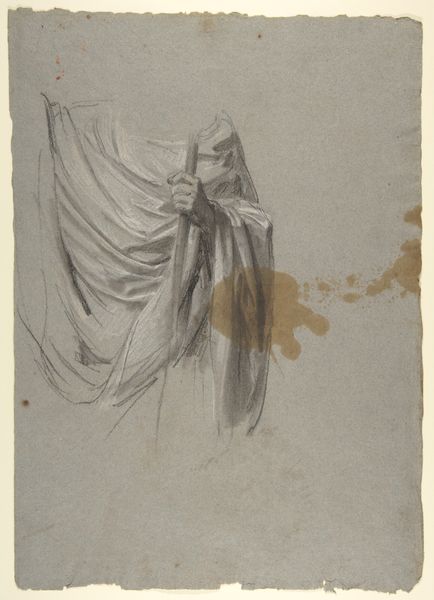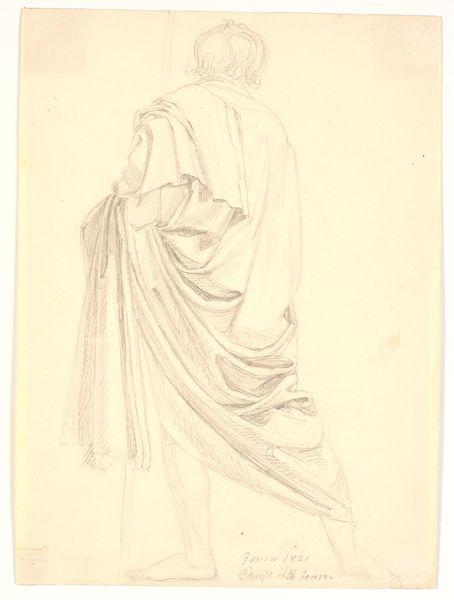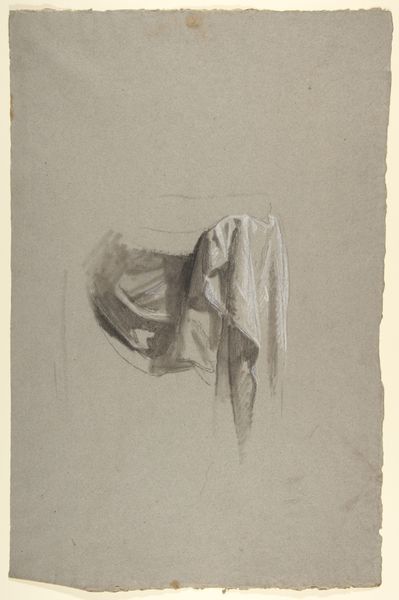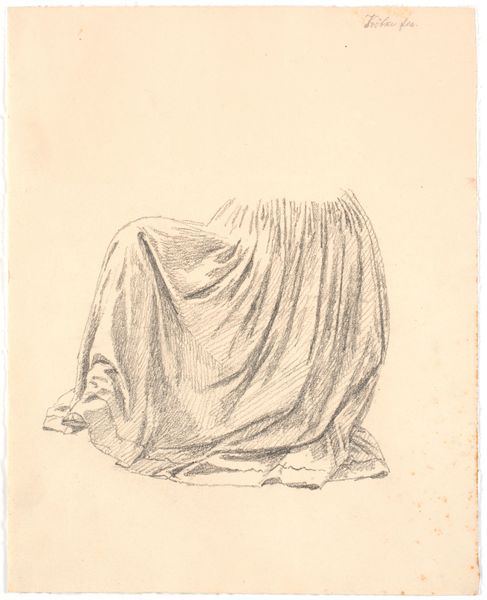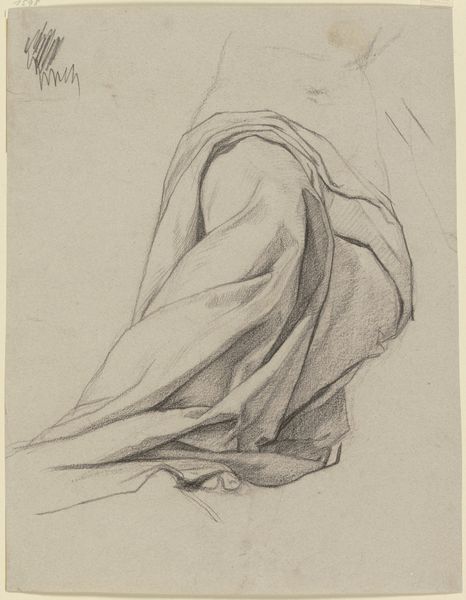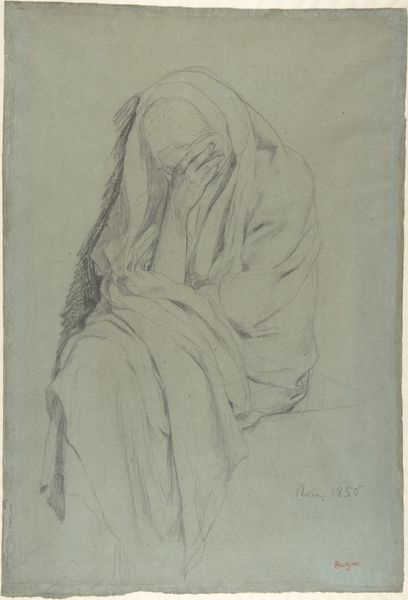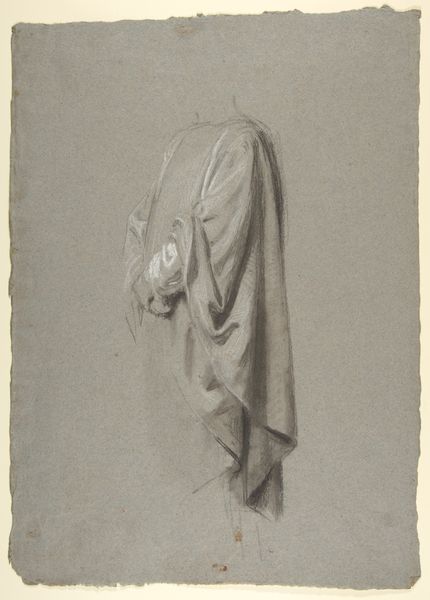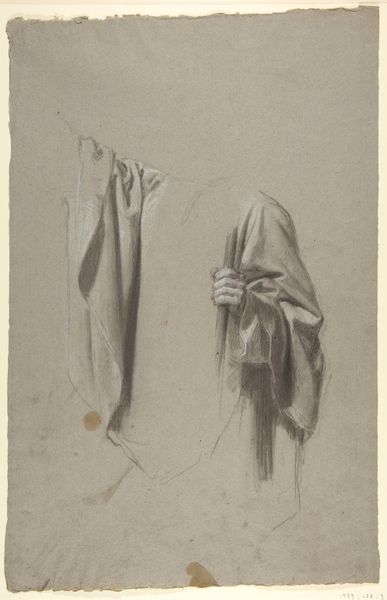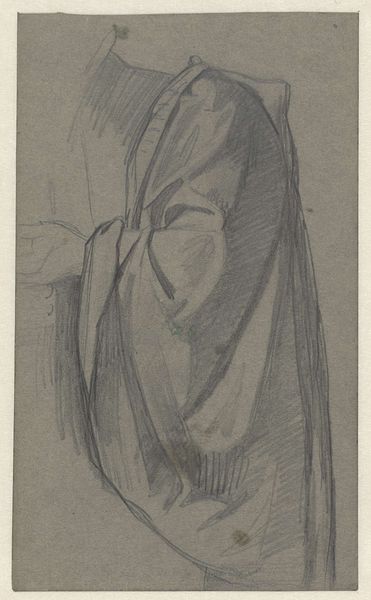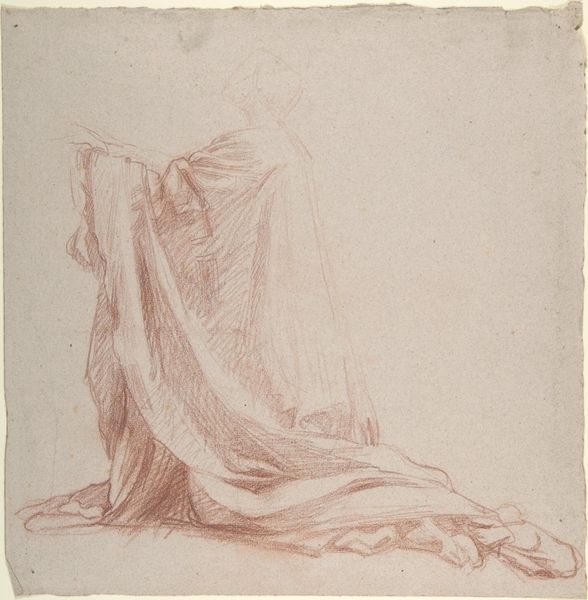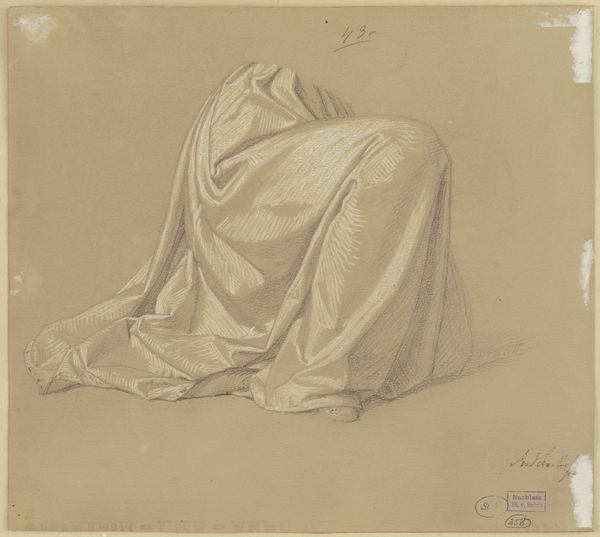
Drapery Study for a Bishop (lower register; study for wall paintings in the Chapel of Saint Remi, Sainte-Clotilde, Paris, 1858) 1830 - 1875
0:00
0:00
drawing, paper, pencil
#
drawing
#
classical-realism
#
figuration
#
paper
#
form
#
pencil drawing
#
pencil
#
line
#
history-painting
#
academic-art
Dimensions: 18 7/8 x 12 in. (47.9 x 30.4 cm)
Copyright: Public Domain
Editor: Isidore Pils' "Drapery Study for a Bishop" from around 1858, done in pencil on paper, is intriguing. It’s just a fragment, really – a swathe of fabric. What can we gather from it, beyond its simple representation? Curator: The choice of pencil and paper itself speaks volumes. Pils wasn't aiming for the permanence or grand statement of oil on canvas. This is about process, about working through an idea. It suggests a focus on the labor involved in creating the final wall painting, elevating the preparatory work, even. Editor: So you see value not just in the final artwork, but also in the sketch itself? Curator: Absolutely. Think about the social context: Pils, an academic painter, making a study for a church commission. By isolating the drapery, he draws attention to the craft, the sheer amount of work and planning that goes into creating such a grand religious image. How much material—in the literal and theoretical sense—did it take to reach completion? Editor: It's interesting to consider this study not just as a precursor but as an artwork in its own right, foregrounding the labor behind the final chapel paintings. Are you saying it makes us think about artistic production itself as a commodity? Curator: Precisely. And consider the materiality of the drapery. Fabric itself is a product, woven through human effort. Its inclusion here emphasizes not just form, but the social reality woven into every thread. The means by which these paintings come into being has bearing on the artwork itself. Editor: I hadn't considered that the fabric itself has a history. Now I’m also wondering about the choice to focus on the drapery and what sort of meaning one can derive from it. Curator: Right, this piece, this specific study of a part, isn't just academic exercise but an active statement. Hopefully that shifts how one thinks of not just drapery, but painting altogether! Editor: That’s a fascinating take. Thanks – that perspective really changes how I see the drawing.
Comments
No comments
Be the first to comment and join the conversation on the ultimate creative platform.
